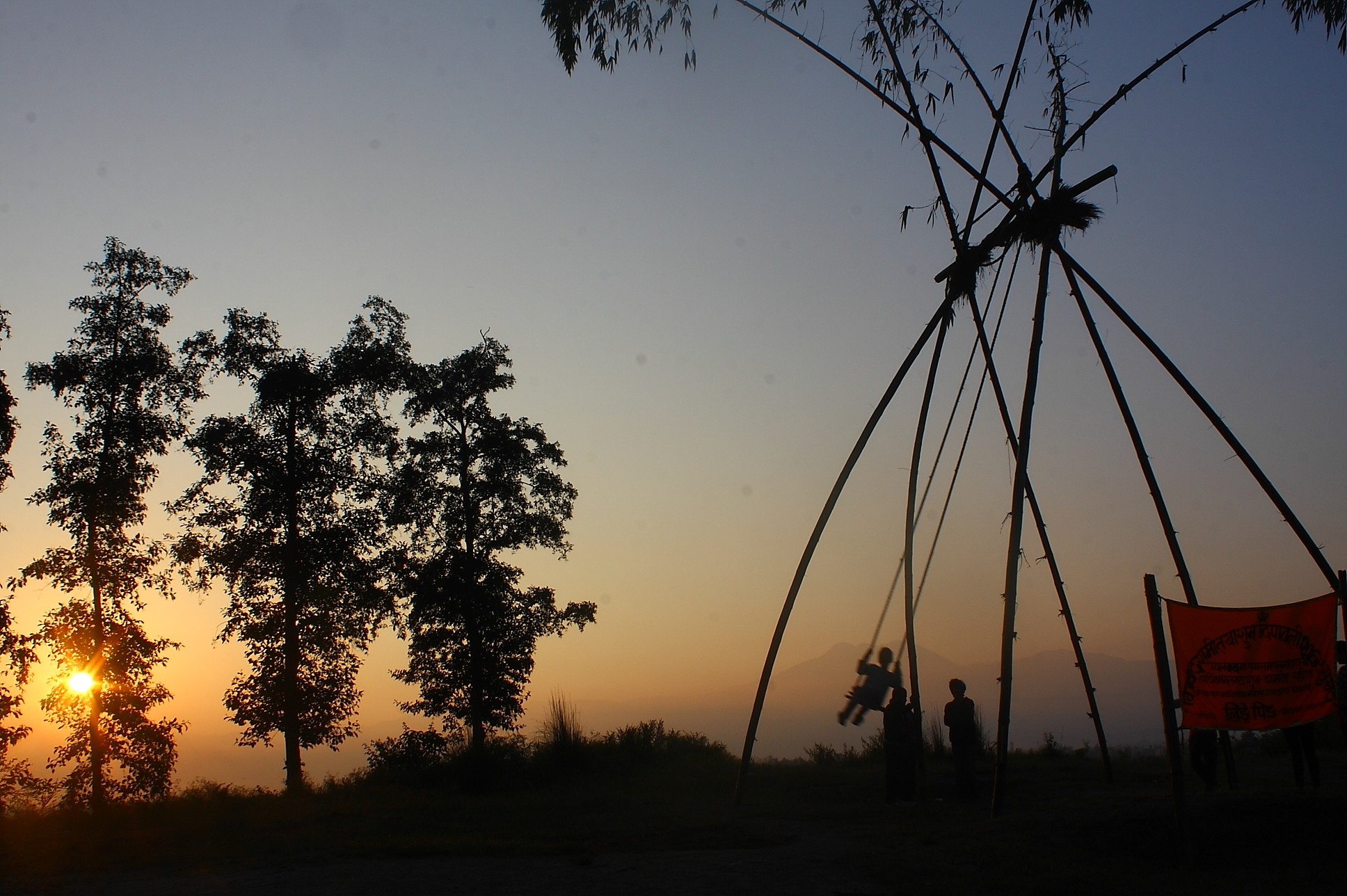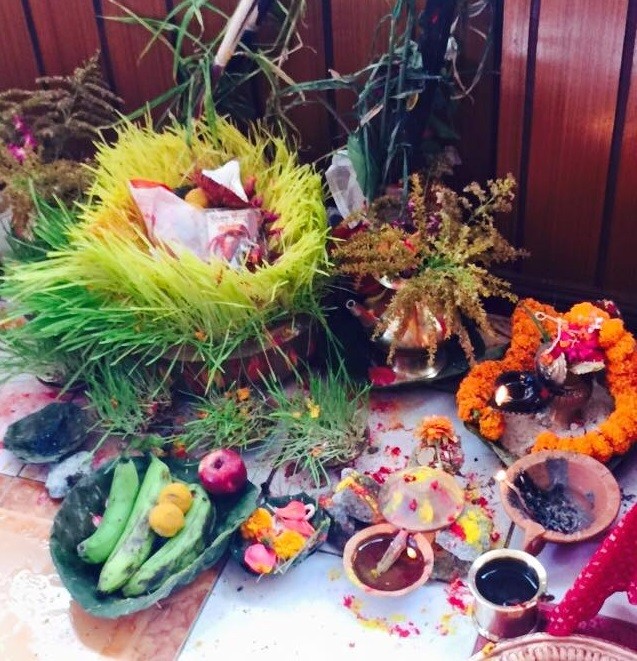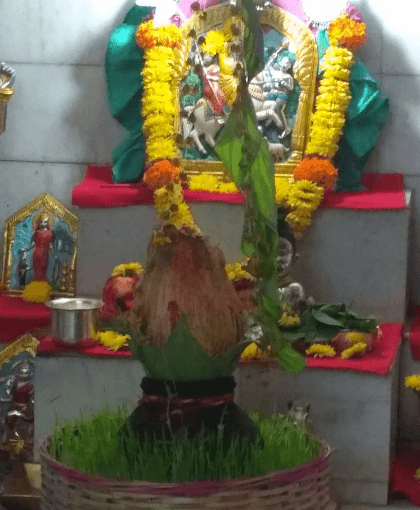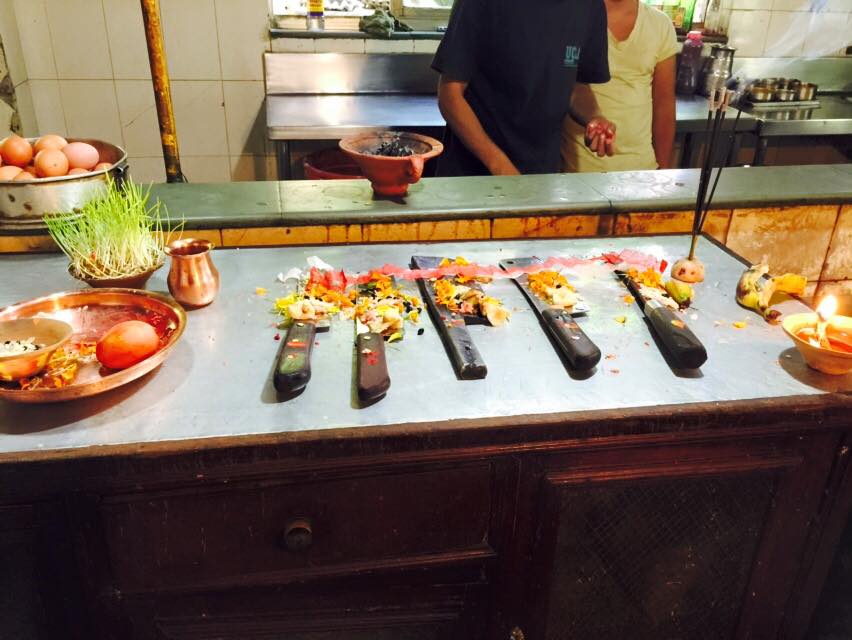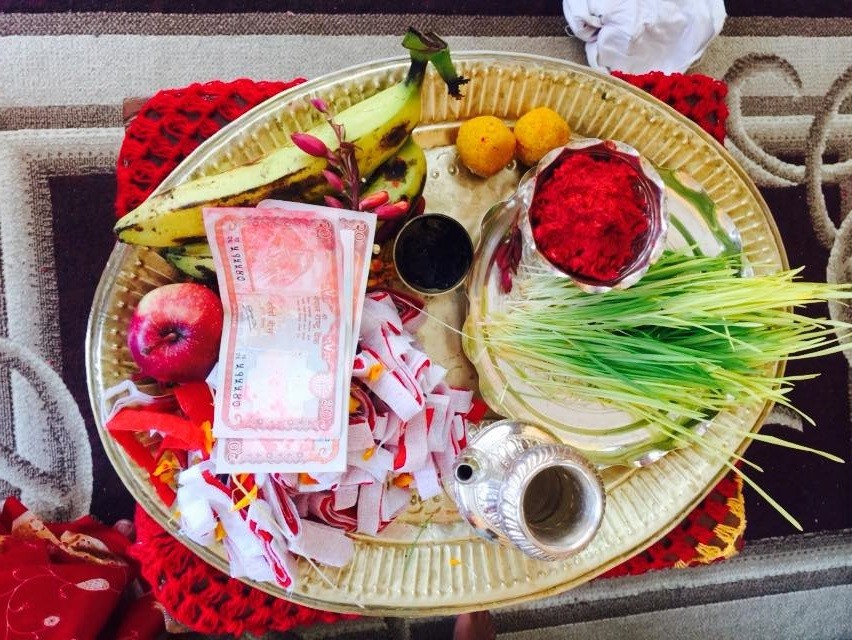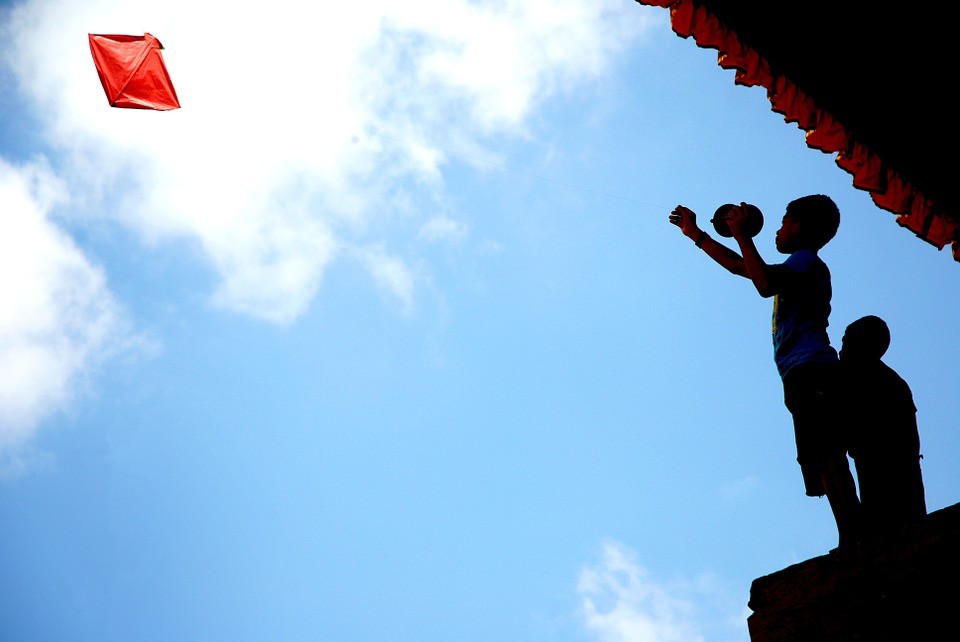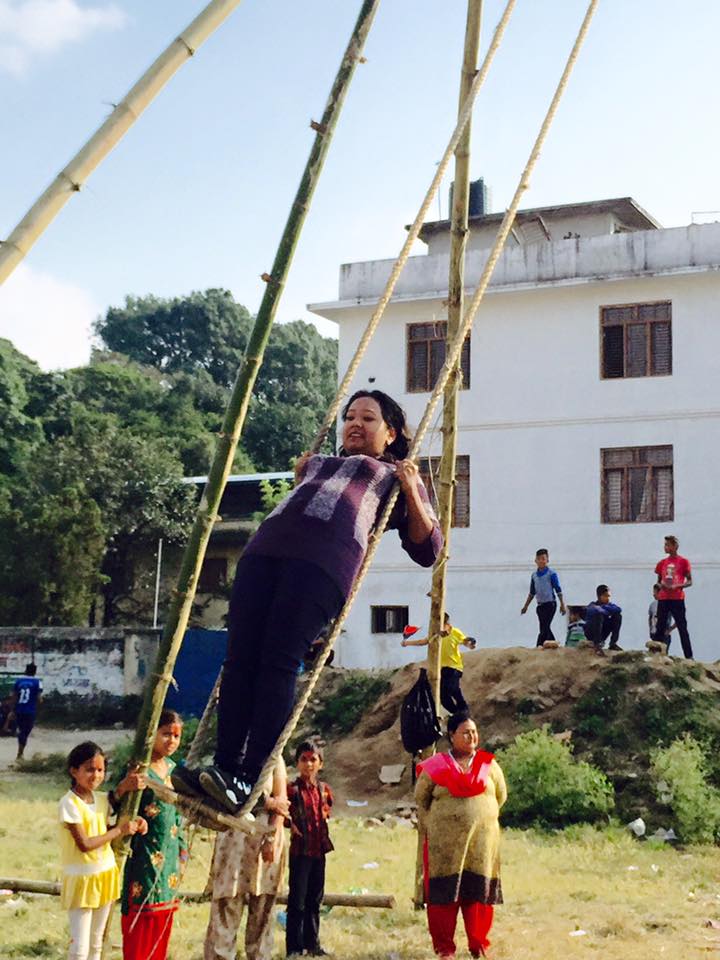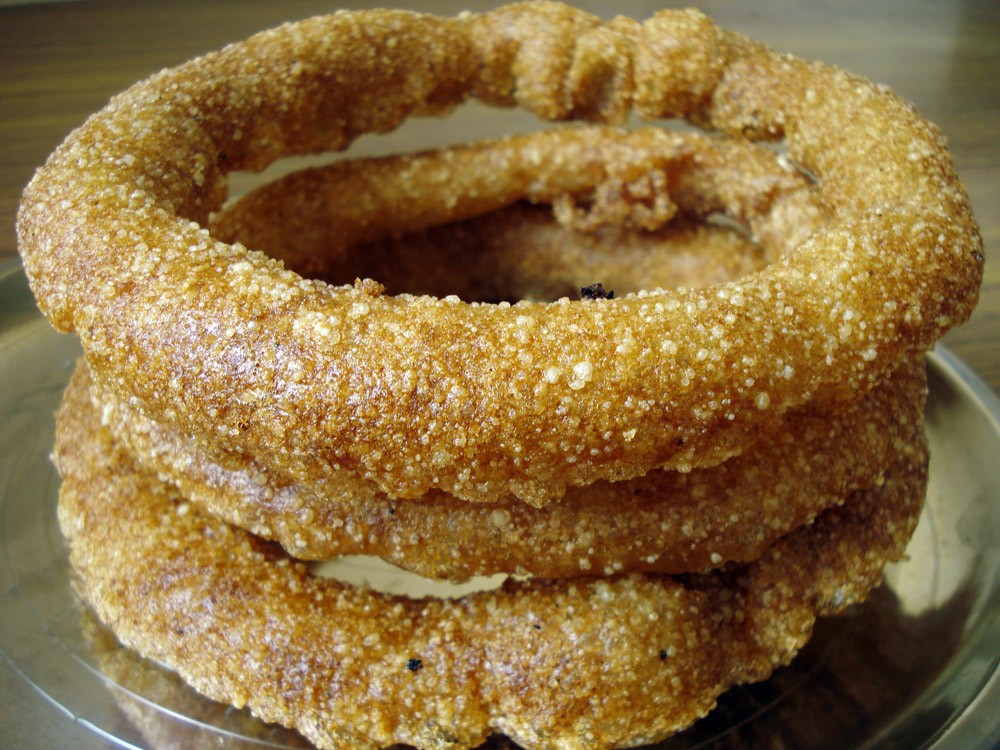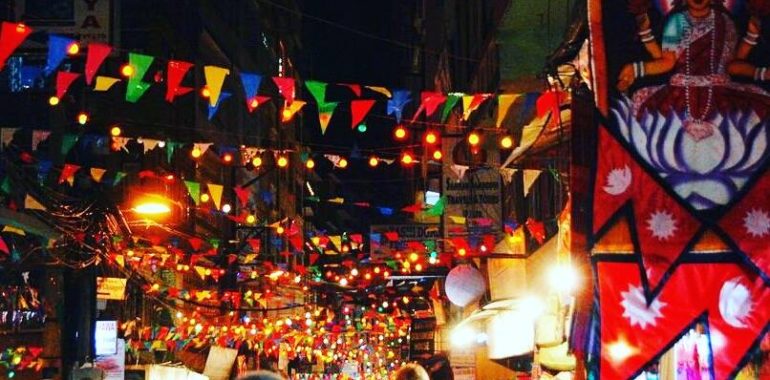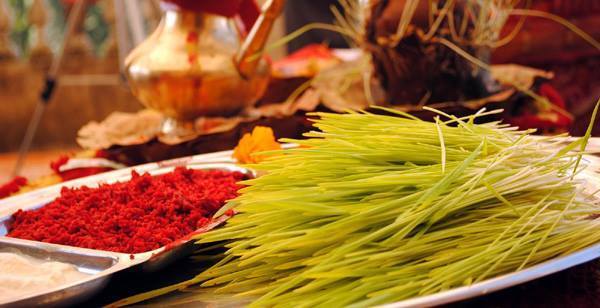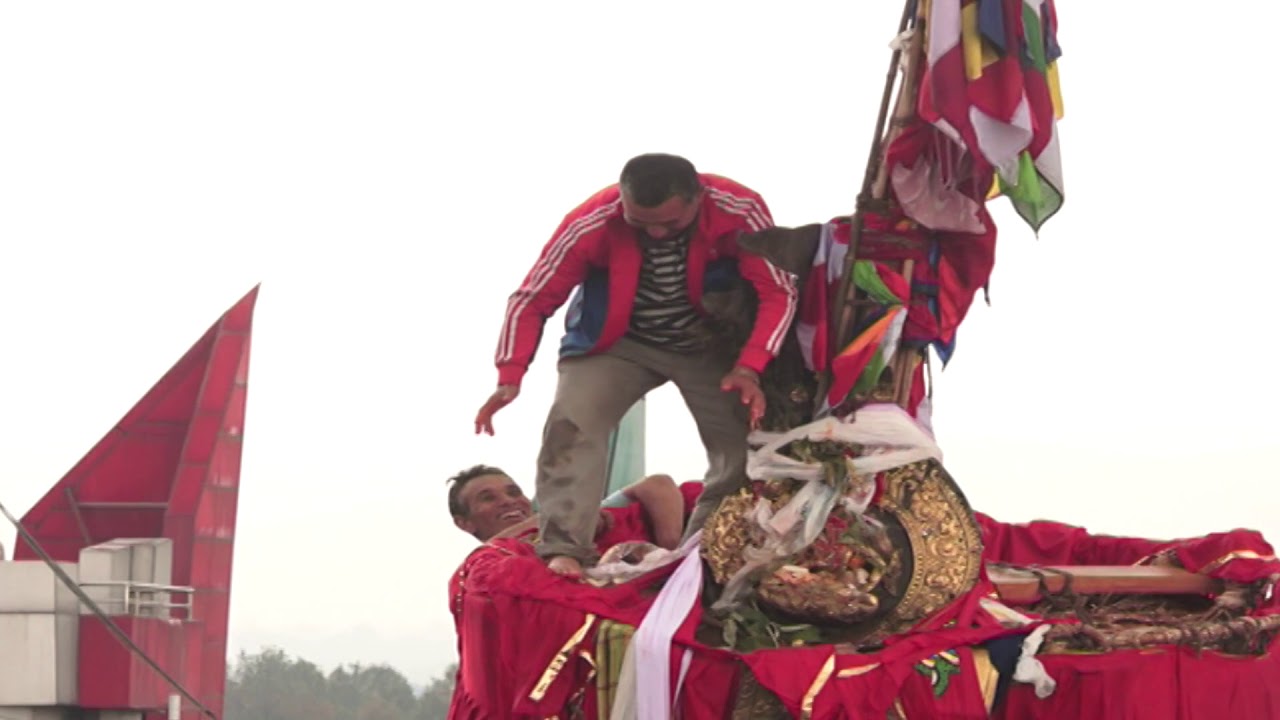Dashain also known as Vijaya Dashami is the longest and the most auspicious festival of Nepal. This festival is observed by Nepalese of all caste and creed all over the country with great faith. Government offices, education institutes and other offices remain closed during the festival.
The festival of Dashain is a celebration of reunion and fun. People who are away from their country and home return to their own home from different part of the world. Every members of the family especially the children are provided with new clothes to add on the happiness. Various traditional foods, feasts, kites and the bamboo swings are the things that symbolize the arrival of Dashain.
The atmosphere during the Dashain has energy in itself. The markets are busy all around the country and the economy of almost every sector boost. Houses and the surroundings are cleaned; people move from places to place and the whole environment seems so lively. The natural environment adds more beauty in the occasion. It is neither too hot nor too cold, rain stops to pour, the sun shines, trees regenerate green leafs and the flowers bloom. We can feel the festive evidence in the fragrance of the environment.
When is Dashain in 2018?
Dashain falls on the month of September or October. Dashain is a 15 days long festival that falls on the “bright moon” until the full moon in the month of Ashwin. In the first nine days of the festival, people worship goddess Durga and her different manifestations. The tenth day is celebrated grandly by worshipping the idols of gods and goddess in a procession and celebrates the victory over evil. The rest of the five days celebrate the victory with blessings from the goddess. Among the fifteen days of celebration, the first, seventh, eighth, ninth and the fifteenth days are more important.
This year the Dashain starts from 10th October 2018 which is 24th Ashwin 2075 according to the Nepali calendar. However, the major day of celebration is the tenth day which falls on the 19th October 2018 or 2nd Kartik 2075.
History and Significance of Dashain
According to the Hindu mythology, once a water buffalo demon named Mahishasura was causing trouble in the world of the gods. There was a battle between the demon and goddess Durga. The battle lasted for ten long days. In the last day, the demon was killed by the goddess which is the day of celebration of the Dashain. The former days of the festival indicates the battle days between the Mahishasura and the goddess Durga while the tenth day is celebrated as the day of victory. Vijaya means the victory and the Dashami means the tenth day, which made the name of the festival.
[calltoaction button_text=”Contact Us” button_url=”https://www.nepalsanctuarytreks.com/contact-us/”]Know more about the Longest and the most Auspicious Festival in the Bikram Sambat-Dashain[/calltoaction]
Likewise, another Hindu legend Ramayana represents Dashain as the day when Ram (vice) got the victory over the Ravan (virtue) with the blessing of goddess Durga.
Does not matter how it is described, it symbolizes the victory of good over evil. The people believe that the celebration of Dashain will lead an individual towards the right path. Also, goddess Durga will protect the members of the families forever. The elder members bless the younger of their family and neighbor with good advices. They also believe that it is good to receive the tika and blessings from as many people as you can.
Dashain Celebration: What happens in different days of Dashain?
Even though Dashain is the festival celebrated for continuous fifteen days, some of the days have a specific and important significance. Let’s know more about Dashain, going through what specifically happens in certain days:
Day 1: Ghatasthapana
The first day if the festival; Ghatasthapana is the day of sowing Jamara. Ghada or Kalash means ‘holy vessel’ and sthapana means ‘to establish.’ Literally, in this day, a Kalash symbolizing the goddess Durga is kept and filled with the holy water that is collected from a sacred pond or river. The devotees prepare a rectangular sandy area with the Kalash at the center. The priest starts the Puja inviting the goddess to rest in the Kalash for coming nine days. The barley seeds are sown around the Kalash in the sandy area which are believed to be pure and blessed.
The room where this is all done is known as Dashain Ghar and is worshipped throughout the festival period. Traditionally only the males of the family used to perform the ritual, however, it is not the same these days. The place where seeds are sown is chosen in such a way that direct sunlight does not reach there. For nine days the Kalash is worshiped and the sown area is watered regularly. At the end of the ninth day, the seed will grow almost up to five or six inches and will be yellowish in color. This grass is considered as sacred and is called Jamara.
Day 7: Phulpati
During the day of Phulpati, the Brahmins from the Gorkha bring out the Royal Kalash, Banana stalks, Jamara and sugarcane tied with the red cloth. The procession is about three days long. The government officials wait for the arrival of the Phulpati in Tundikhel and join the parade to Hanuman Dhoka. The Nepalese army observes the continuous firing of the weapons for about fifteen minutes to celebrate the arrival of the Phulpati. There is a Royal Dashain Ghar inside the Hanuman Dhoka where the Phulpati are kept.
But since 2008, after the Royal family was overthrown from the country, the tradition of the arrival of the Phulpati has changed. The Phulpati now goes to the residence of the President.
Day 8: Maha Aasthami
The people worship the fiercest manifestation of goddess Durga; blood thirsty Kali in the eighth day of Dashain. Goddess Kali and Durga receives massive sacrifices of animals like goats, hens, buffaloes, goats and ducks in Kathmandu and in several parts of Nepal. The blood is sacrificed to the goddess as a symbol of fertility. The meat is then taken to the homes, and eaten as a sacred food; Prasad, which is blessed by the goddess. The people organize feast in their homes.
The Newar Community perform the feast called Kuchi Bhoe in which ritually people should consume two pathi of beaten rice including bhuttan, (fried intestine and other abdominal part), tori ko saag (mustard leaves), bara, (beancake), chowella, (marinated meat) aaloo ko achaar, (potato pickle) bhatmaas, (soybean) aduwa, (spiced ginger) bodi (blacked- eyes peas) in a banana leaf including Aila (liquor) and thoo (Newari alcohol).
Day 9: Maha Nawami
The ninth day of the festival; Maha Nawami is the last day of Navaratri. Until this day, the ceremonies reach to the peak. The state offers the sacrifices of the buffaloes under gunfire salutes in Hanuman Dhoka Royal Palace. During the day, Vishwa karma is worshiped (the god of creativity) where people sacrifice duck, goat, duck egg, hens to vehicles, various equipment and tools. The devotees believe that the worshiping of the vehicles on this day will prevent the accidents in the future days.
The night of the ninth day is also called as Kal Ratri or the Black night. The Basantapur area is lively the whole night and there is a tradition of the mass scarifying of 54 buffaloes and 54 goats in the Dashain Ghar.
The ninth day of Dashain is the only day when the gates of the Taleju temple are open to the public. Thousands of devotees go to pray and honor the goddess throughout the day.
Day 10: Bijaya Dashami (Vijaya Dashami)
The tenth day is the day with the most significance. The tika; a mixture of rice, vermilion and yogurt is prepared by the women. Dressed up in new and beautiful dresses, the younger receives the tika from the elders. The elders also give the younger ones blessings to be a good person and for their better future. The red tika is taken as a symbol of blood that ties the family together for forever. Along with the tika, the younger also receive a small sum of money called “Dakshina”. The relatives and the family members away from their home come to receive tika on the following days of the tenth day.
Day 15: Kojagrata Puja
The fifteenth day of Dashain is the last day that falls on the full moon day called Kojagrata Purnima. The actual meaning of the Kojagrata is ‘who is awake’. On this day, people worship the goddess of wealth; goddess Laxmi. They believe that the goddess will descend down to the earth in this day and bless her with prosperity that is awake for the whole night. The people enjoy the night by playing cards and much more.
Traditions during the great festival of Dashain
The people of Nepal celebrate the Dashain with great enthusiasm and fun. There are still more traditions associate with the festival which includes:
Kites: The kites are the very important part of the festival. As the festival arrives closer, we can see the various colored and various sized kites in the sky over most part of Nepal. The kites are also considered as the messenger to the god for more rain. Mostly, the children are found enjoying with the kites. While the children are busy with the kites, the elder members are busy in playing cards.
[calltoaction button_text=”Contact Us” button_url=”https://www.nepalsanctuarytreks.com/contact-us/”]Have any Query about Vijaya Dashami?[/calltoaction]
Bamboo Swing: Dashain is almost incomplete without Bamboo Swing. The people construct the swings by using the four Bamboo sticks, a thick rope made up of grass and wood. This swing is called “Linge Ping.” There are swings in almost one and other villages during the Dashan. The swing is constructed at least a day earlier than Ghatasthapana and is almost kept until the Tihar. We can find people of different ages in a queue waiting for their turn to play the swing. The people also believe that during the Dashain festival, they must leave the feet from the earth and play the swing at least once.
Rotis: There is a special tradition of making a round shape roti during the Dashain. Especially sweet ring shaped rice bread is prepared on Dashain. The roti is called “Sel Roti” and is prepared from the floor of rice. Almost every house makes this roti during the festival.
What for the Tourists?
Tourists can also enjoy the festival in many ways. Numerous small fairs are conducted throughout the country with Ferris and wheels and other rides and entertainment. Tourist can listen the Dashain music all around the cities which is called “Mal Shree Dhun”. The markets during the Dashain are worth visiting with so much of the crowd and many offers in almost every sector. Most importantly, the Dashain procession that passes through the three cities of the Kathmandu Valley is something that will amaze the tourists.

